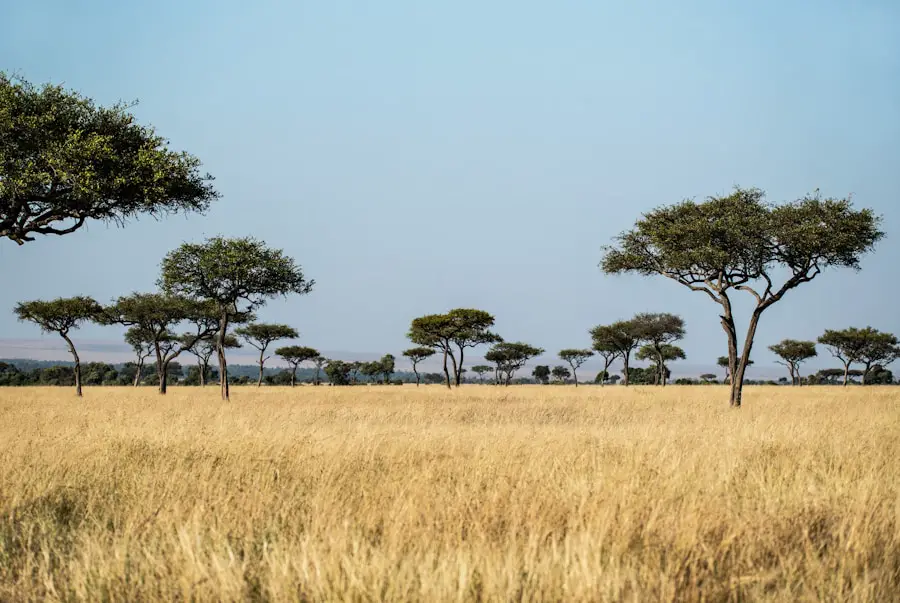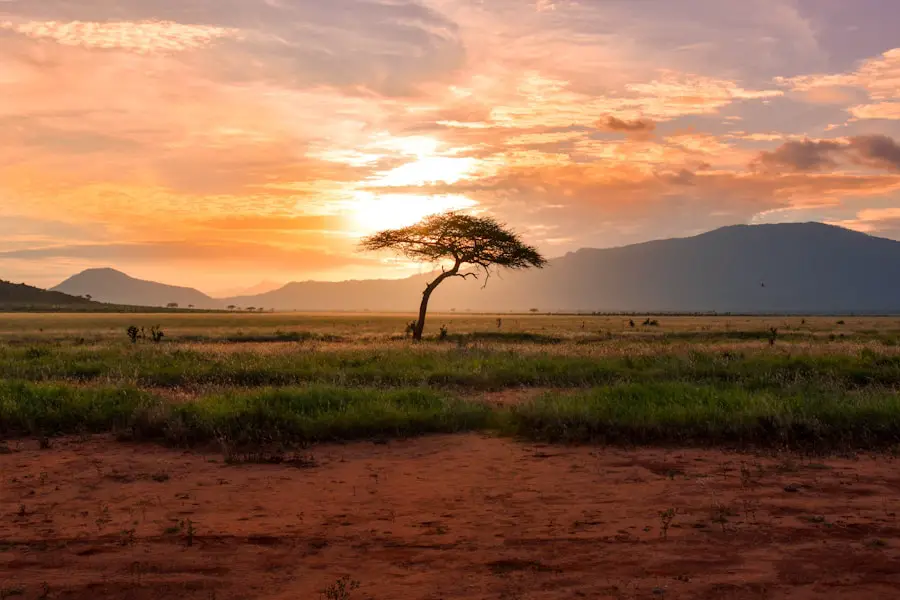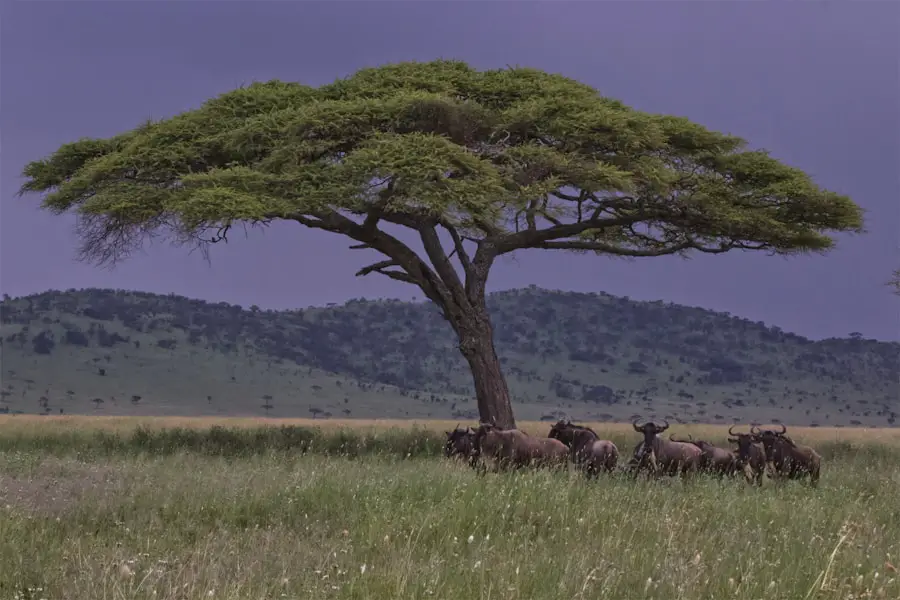Tanzania, located in East Africa, is a country renowned for its stunning landscapes, diverse ecosystems, and rich cultural heritage. The geography of Tanzania is as varied as its climate, featuring everything from the snow-capped peaks of Mount Kilimanjaro to the expansive plains of the Serengeti and the idyllic beaches of Zanzibar. The country is bordered by Kenya and Uganda to the north, Rwanda, Burundi, and the Democratic Republic of the Congo to the west, and Zambia, Malawi, and Mozambique to the south.
Its eastern coastline along the Indian Ocean is dotted with beautiful islands, including Pemba and Mafia, which add to the allure of this vibrant nation. The climate in Tanzania is predominantly tropical, characterized by two main seasons: the wet season and the dry season. The wet season typically runs from March to May, while the dry season spans from June to October.
However, variations exist depending on the region. For instance, the coastal areas experience a more humid climate, while the inland regions can be significantly drier. The highlands around Mount Kilimanjaro have a cooler climate due to their elevation.
Understanding these climatic nuances is essential for travelers seeking to explore Tanzania’s natural wonders and cultural richness.
Key Takeaways
- Tanzania has a diverse climate and geography, ranging from coastal plains to highlands and mountains.
- The peak tourist season in Tanzania is during the dry season, from June to October, when wildlife viewing is at its best.
- The best time for safari in Tanzania is during the dry season, when animals gather around water sources and are easier to spot.
- Traveling during the off-peak season in Tanzania can offer benefits such as lower prices, fewer crowds, and lush landscapes.
- When traveling to Tanzania, it’s important to consider the weather and climate, as well as the potential for malaria and other health concerns.
Peak Tourist Season in Tanzania
The peak tourist season in Tanzania generally coincides with the dry months from June to October. During this period, wildlife viewing is at its best, as animals congregate around water sources, making them easier to spot. The Serengeti National Park, in particular, attracts thousands of visitors eager to witness the Great Migration, where millions of wildebeest and zebras traverse the plains in search of greener pastures.
This natural spectacle typically peaks between July and September, drawing wildlife enthusiasts and photographers from around the globe. Accommodations during peak season can be challenging to secure due to high demand. Many lodges and camps book up months in advance, particularly those located near prime wildlife viewing areas.
Travelers should plan ahead and consider making reservations well in advance to ensure they can experience Tanzania’s breathtaking landscapes and wildlife. Additionally, while the weather during this time is generally pleasant with clear skies and moderate temperatures, it is essential to prepare for cooler evenings, especially in higher altitudes.
Best Time for Safari in Tanzania

While the peak tourist season offers excellent wildlife viewing opportunities, the best time for a safari in Tanzania can vary depending on specific interests and locations within the country. For those keen on witnessing the Great Migration, visiting between July and September is ideal. During this time, herds of wildebeest and zebras cross the Mara River into Kenya’s Maasai Mara, creating dramatic scenes that are a photographer’s dream.
However, for travelers interested in birdwatching or experiencing a quieter safari atmosphere, the shoulder months of November to early December and late January to February can be equally rewarding. During these periods, migratory birds flock to Tanzania, providing a vibrant display of colors and sounds. Additionally, many animals give birth during this time, offering unique opportunities for observing young wildlife.
The landscape is also lush and green after the short rains in November, enhancing the beauty of the parks.
Off-Peak Season and Benefits of Traveling During this Time
| Benefits of Off-Peak Season Travel | Statistics |
|---|---|
| Lower Prices | On average, airfare and hotel prices are 20-30% cheaper during off-peak season. |
| Less Crowds | Popular tourist destinations are less crowded, allowing for a more relaxed and enjoyable experience. |
| More Availability | There is greater availability for accommodations, tours, and activities during off-peak season. |
| Authentic Experience | Travelers can experience the local culture and traditions more authentically without the influence of mass tourism. |
| Flexible Schedules | Travelers have more flexibility in choosing travel dates and can take advantage of last-minute deals. |
Traveling during Tanzania’s off-peak season, which typically occurs from March to May and again from November to early December, presents several advantages for adventurous travelers. One of the most significant benefits is reduced crowds at popular tourist destinations. With fewer visitors in national parks and reserves, travelers can enjoy a more intimate experience with nature and wildlife without the hustle and bustle often associated with peak season.
Additionally, prices for accommodations and tours tend to be lower during off-peak months. Many lodges offer discounts or special packages to attract visitors during these quieter times. This affordability allows travelers to experience luxury accommodations or guided tours that may be out of reach during peak season.
Furthermore, the lush landscapes following the rains create stunning backdrops for photography and exploration, making it an excellent time for those who appreciate natural beauty.
Weather and Climate Considerations for Traveling to Tanzania
When planning a trip to Tanzania, understanding the weather patterns is crucial for ensuring a comfortable experience. The coastal regions experience a humid tropical climate with temperatures averaging between 25°C (77°F) and 30°C (86°F) year-round. In contrast, the central plateau has a more temperate climate with cooler nights and daytime temperatures ranging from 20°C (68°F) to 30°C (86°F).
The highlands around Mount Kilimanjaro can be significantly cooler, especially at higher elevations where temperatures can drop below freezing at night. Travelers should also consider the rainy seasons when planning their itineraries. The long rains occur from March to May, while short rains typically fall from November to early December.
While these periods can bring heavy downpours that may disrupt travel plans, they also rejuvenate the landscape and provide unique opportunities for wildlife viewing as animals gather around water sources.
Cultural and Festival Events in Tanzania Throughout the Year

Tanzania’s rich cultural tapestry is woven from various ethnic groups, each contributing unique traditions and festivals throughout the year. One of the most significant events is Saba Saba (July 7), which celebrates the founding of Tanzania’s cooperative movement. This day is marked by parades, speeches, and cultural performances across the country, showcasing local music and dance.
Another notable festival is the Zanzibar International Film Festival (ZIFF), held annually in July. This event attracts filmmakers and artists from across Africa and beyond, providing a platform for showcasing African cinema and culture. Visitors can enjoy film screenings, workshops, and cultural exhibitions that highlight Zanzibar’s unique heritage.
In addition to these larger events, many local communities celebrate traditional festivals that reflect their customs and beliefs. For instance, the Wazaramo people celebrate their harvest festival known as “Mwaka Kogwa,” which takes place in July or August. This vibrant event features traditional music, dance, and rituals that honor ancestral spirits while fostering community bonds.
Considerations for Climbing Mount Kilimanjaro
Climbing Mount Kilimanjaro is a bucket-list adventure for many travelers seeking to conquer Africa’s highest peak at 5,895 meters (19,341 feet). However, this endeavor requires careful planning and preparation. One of the first considerations is choosing the right route; several paths lead to the summit, including Machame, Lemosho, Marangu, and Rongai routes.
Each route offers different experiences in terms of scenery, difficulty level, and duration. Acclimatization is another critical factor when climbing Kilimanjaro. Due to its high altitude, climbers are at risk of altitude sickness if they ascend too quickly.
It is advisable to take a longer route that allows for gradual acclimatization—typically seven days or more—to increase chances of reaching Uhuru Peak successfully. Additionally, physical fitness plays a vital role; climbers should engage in regular training that includes cardiovascular exercises and strength training leading up to their expedition. Proper gear is essential for a successful climb as well.
Climbers should invest in high-quality hiking boots, warm clothing layers suitable for varying temperatures, rain gear, and sleeping bags rated for cold conditions. Hiring experienced guides who are familiar with Kilimanjaro’s terrain can enhance safety and provide valuable insights into navigating this majestic mountain.
Tips for Planning Your Trip to Tanzania
When planning a trip to Tanzania, several practical tips can enhance your travel experience. First and foremost, it’s essential to research visa requirements well in advance of your journey. Many nationalities can obtain a visa on arrival; however, applying online before departure can save time upon arrival at Tanzanian airports.
Health considerations are also paramount; travelers should consult with healthcare professionals regarding vaccinations and medications needed before traveling to Tanzania. Malaria prophylaxis is often recommended due to the presence of mosquitoes in many regions. Budgeting wisely is crucial as well; while Tanzania offers a range of accommodations from budget hostels to luxury lodges, costs can add up quickly when factoring in park fees, guides, transportation, and meals.
Creating a detailed itinerary that includes all potential expenses will help manage finances effectively. Lastly, embracing local customs and etiquette can enrich your travel experience significantly. Learning basic Swahili phrases can foster connections with locals while demonstrating respect for their culture.
Engaging with local communities through guided tours or cultural experiences not only supports sustainable tourism but also provides deeper insights into Tanzania’s diverse heritage. By considering these factors when planning your trip to Tanzania—whether it’s timing your visit around wildlife migrations or cultural festivals—you can create an unforgettable adventure that showcases this remarkable country’s natural beauty and vibrant culture.
When planning your trip to Tanzania, it’s important to consider the best time to visit this beautiful country. According to a helpful article on TakeTravelInfo, the ideal time to travel to Tanzania is during the dry season, which typically falls between June and October. This is when you can witness the Great Migration in the Serengeti and enjoy optimal wildlife viewing opportunities. Additionally, it’s recommended to pack light and efficiently with the best carry-on luggage for international travel to make your journey hassle-free.
FAQs
What is the best time to travel to Tanzania?
The best time to travel to Tanzania is during the dry season, which runs from late June to October. This is when the weather is cooler and drier, making it ideal for wildlife viewing and outdoor activities.
What is the weather like in Tanzania during the best time to travel?
During the dry season, the weather in Tanzania is generally warm and sunny, with little to no rainfall. Temperatures can vary depending on the region, but it is typically comfortable for outdoor activities.
What are the main attractions to visit in Tanzania during the best time to travel?
During the dry season, visitors to Tanzania can enjoy wildlife safaris in popular national parks such as Serengeti and Ngorongoro Crater. It is also a great time to visit the beautiful beaches of Zanzibar and explore the cultural heritage of the local tribes.
Are there any specific events or festivals to look out for during the best time to travel to Tanzania?
During the dry season, Tanzania hosts the annual Wildebeest Migration, where millions of wildebeest, zebras, and other animals migrate across the Serengeti. This is a spectacular event that attracts many visitors to the region.
Are there any considerations to keep in mind when traveling to Tanzania during the best time?
It is important to book accommodations and safaris well in advance, as the dry season is a popular time for tourists to visit Tanzania. Additionally, it is advisable to pack appropriate clothing for both warm days and cooler evenings.
